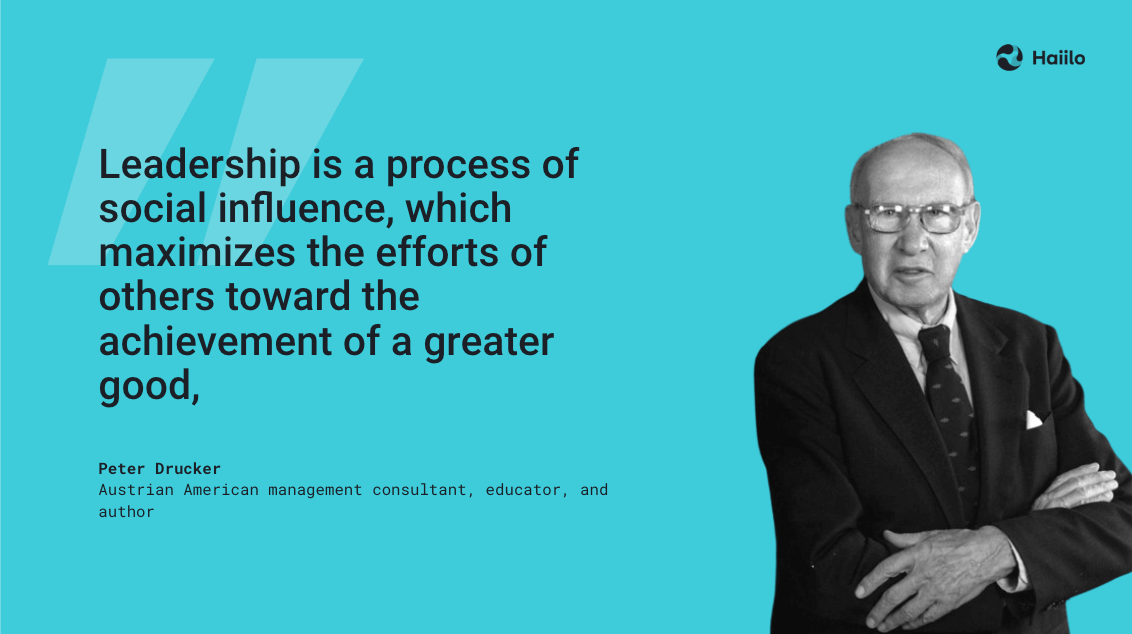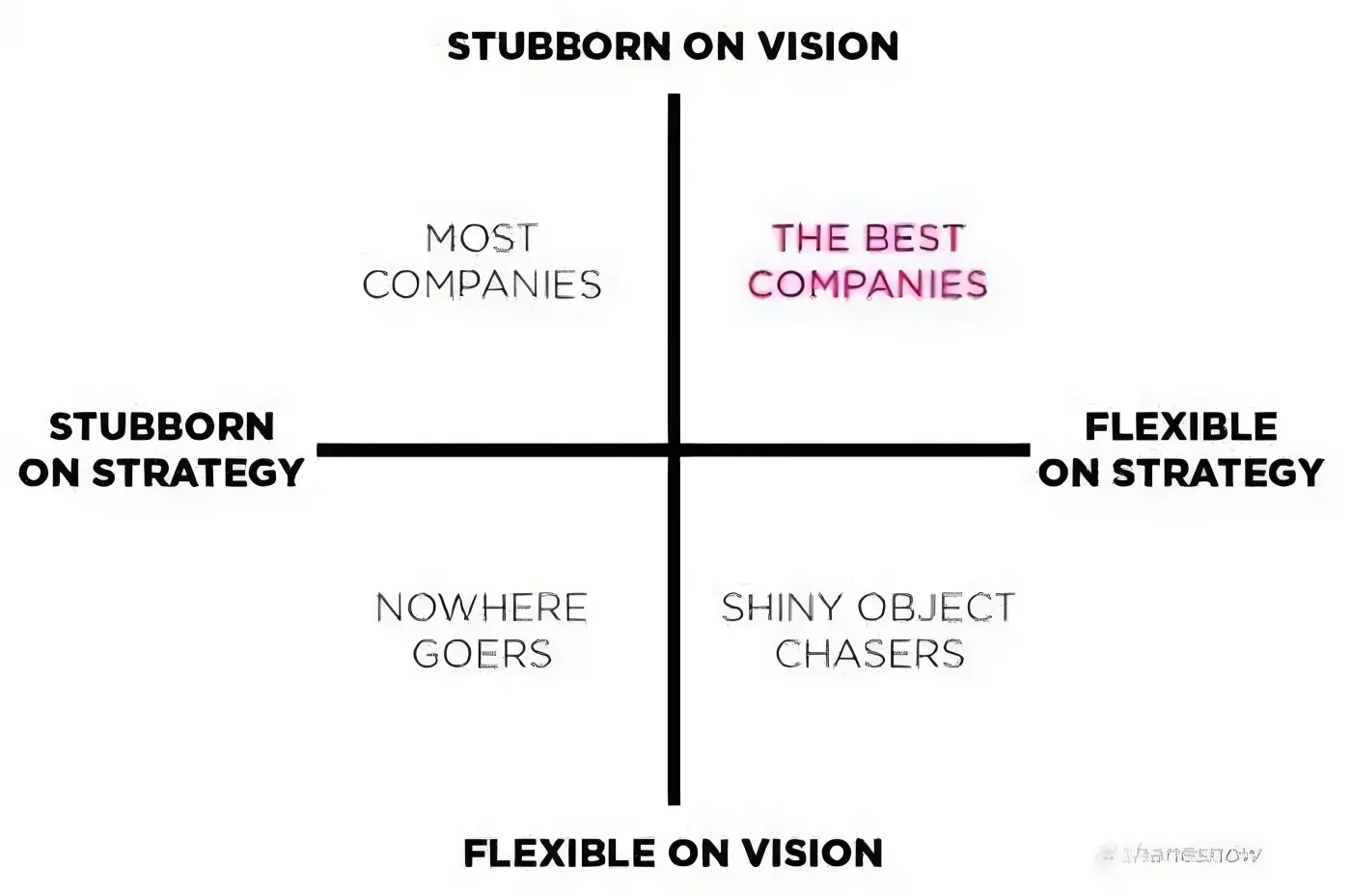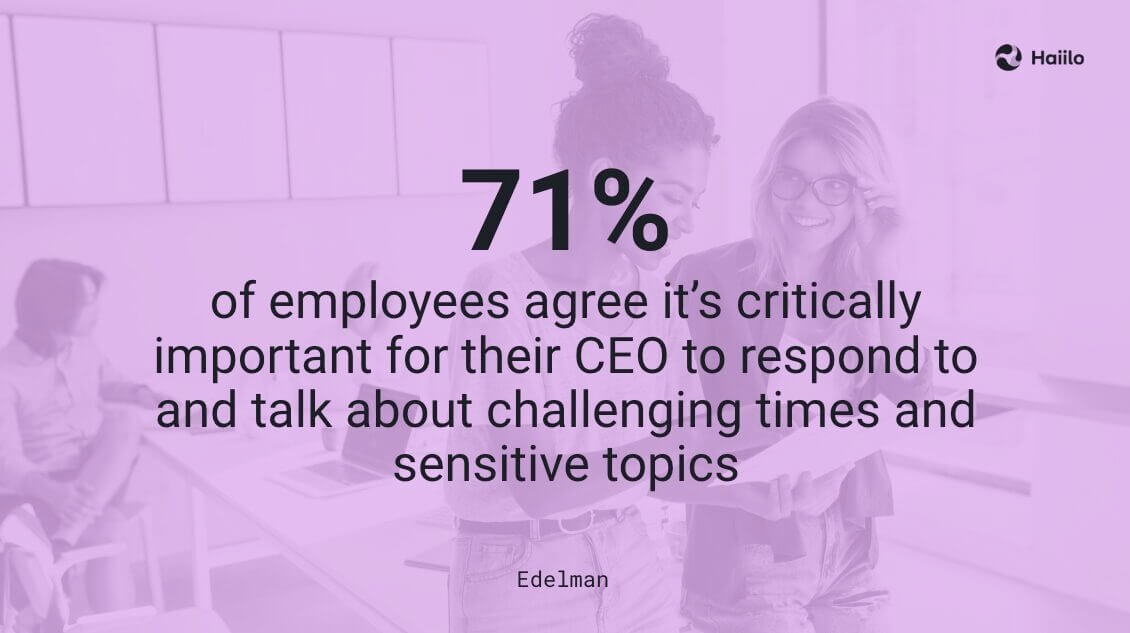What is leadership? What are the qualities and characteristics of a great leader? Can anyone be a good leader? Let’s find out in this blog post!
Like management or talent development, leadership is one of those concepts that we have an inherent knack for recognizing but have a tough time defining well.
Part of this is because great leaders don’t all lead the same way or have the same experience. Some push their teams really hard, and others emphasize work-life balance and employee experience. Some are much more hands-on, while others delegate profusely.
Great leaders can be engineers or salespeople, anyone from business school alumni to senior managers.
Learn how great internal comms can boost your leadership style
But none of those leaders just started managing people and teams out of intuition. It’s an iterative process where you try something, make mistakes, and then adjust your style. As Vince Lombardi said, great leaders aren’t born — they’re made.
So, from all of the great leaders and managers that have paved the way, what can we learn about leadership, the mistakes and success stories that make it? And what does leadership really mean in today’s world?
What Is Leadership and Why Leadership Qualities Matter
Leadership isn’t about a word in your title, a certain salary band, or any specific trait like charisma or extroversion. There are a lot of great definitions of leadership out there, especially by those who embody it.
In the Entrepreneur’s article What Really Makes a Good Leader?, the author, Travis Bradberry, shares a quote by Peter Drucker: “The only definition of a leader is someone who has followers” as well as one by Bill Gates:”As we look ahead into the next century, leaders will be those who empower others”.
He also gives his own: “Leadership is a process of social influence, which maximizes the efforts of others toward the achievement of a greater good.”

Another interesting quote on what being a leader means is one from Dwight Eisenhower. He said, “Leadership is the art of getting someone else to do something you want done because he/she wants to do it.” That sentence encapsulates all the elements of what leadership is.
Leadership is an art — which means there’s no right way to do it. Leadership is an attitude, an intuition built over time.
And because there are multiple ways of getting to one outcome, you can be creative about it.
Leadership involves “someone else,” even if they don’t have to be direct reports or people who have a financial or social obligation to do what you tell them to do.
There’s always a purpose, something that needs to get done. There’s a goal at the end, and you and someone else are working together to achieve it. And finally, to what John Maxwell said, “leadership is influence.” That’s the last piece of the puzzle in Eisenhower’s quote.
We’ve known for a long time that internal motivation is the strongest driver of behavior.
Getting people to do things (and having them go above and beyond) doesn’t come from authority or power. It comes from the ability to socially influence them — to show them why something is important or meaningful and light a fire within them to contribute to that.
What Are the Most Important Leadership Qualities?
Even though there are many styles of leadership, you can judge if one certain approach works or not by one simple metric: is that leader getting the outcome he or she wants?
Specifically, it’s about the purpose and the people: is the goal set out by them being achieved, and are the people they’re leading happy as they work towards that goal?
To do these, a great leader has to be someone who can identify and strike the right balance between what are usually two opposing ideas.
Here are the most important leadership qualities:
1. Communicating top-down, but also bottom-up
Leaders have to be great communicators. They have to talk to the people they’re leading regularly and have a consistent message that resonates. Great leadership communication is what creates alignment and trust between people.

Empathy is also an important leadership quality. As Kate Pritchard, a consultant specializing in leadership management and employee engagement, told us, “To improve engagement, leaders need to demonstrate that they care about their employees, to listen to them, involve them, and respond to their views”.
The feeling of collaboration is essential. Everyone wants to feel like they’re contributing something, that they’re not just a cog in the wheel or a robot taking orders.
📙 Related: Top 5 Communication Skills and How to Improve Them
Leaders create the space for that kind of contribution and empower the people they lead to accomplish that through upward feedback. They have the ability to make those people around them feel bigger and bolder. It’s about the people they lead, not about themselves.
“It is about empowering employees to feel and think like owners so that they remain motivated to create new opportunities. It is also about establishing a kind of radical transparency in which voices across the hierarchy can be heard. But all of this requires, in turn, the cultivation of an open and trusting environment”.
📙 Related: Empathy in the Workplace: Top Reasons Why You Need to Develop It
Kim Kurlanchik Russen, a partner at TAO Group, says the same thing as Kate Pritchard in different words. In an Entrepreneur article about the qualities of great leaders, she says, “Communication is a balancing act. You might have a specific want or need, but it’s super-important to treat work as a collaboration. We always want people to tell us their thoughts and ideas — that’s why we have all these very talented people working with us.”
📹Clearly, communication in the workplace is important for driving employee engagement. Learn about how to set up communication goals that align with your business strategy.
2. Having strong convictions, but continuing to learn
Balancing communicating well with taking in feedback goes hand in hand with having strong ideals while being willing to put those head-to-head with new data points you’re taking in.
According to Roselinde Torres,
“Great leaders are not head-down. They see around corners, shaping their future, not just reacting to it.”
📙 Related: 5 Ways to Truly Connect with Your Employees
There’s a great Quartz article that talks about what makes a great leader, and they describe them with a few different terms: intellectually humble, opinionated adaptors, and flexible visionaries.
Here’s an example of how they’ve visualized opinionated adaptors so that it’s easy to see the balance a leader is trying to strike:

As Tomasz Tunguz, a prolific blogger and partner at the venture capital firm Redpoint, writes, “the core of leadership starts with listening and then being able to balance the external points of view with a strong sense of self (values, direction, belief).”
📙 Also, learn about what is the difference between leadership and management.
3. Risk-taking, but not reckless
Because leaders have conviction around some idea or some insight into how the world works, they’re willing to make bets on that, and that’s an important leadership quality.
In her TED talk, Rosalinde Torres, a leadership expert from the management consulting firm BCG, talks about leadership in the 21st century as being defined by three questions, distilled from a study of 4,000 companies and her 25 years of experience.
And her third question is about being courageous and taking risks. Here’s a quote from her TED@BCG talk:
“Great leaders dare to be different. They don’t just talk about risk-taking; they actually do it. And one of the leaders shared with me the fact that the most impactful development comes when you are able to build the emotional stamina to withstand people telling you that your new idea is naïve or reckless or just plain stupid.”
4. Ability to influence others
Leaders need to be able to influence other people through authentic and transparent communication. This is why many organizations today are engaging leadership in workplace communications, and making it an important part of their corporate communications strategy.
Leaders should be the role models and continuously encourage others to live by the core company values and align with the ultimate business goals.
5. Building trust and transparency
Building trust and driving transparency is one of the most important leadership characteristics. Today, employees expect their leaders to be trustworthy and share all the important information and company updates.

Instead of hiding information and leaving employees in the dark, a great leader should openly communicate about everything that is going on in their organization.
By giving visibility to your followers, they will buy into your mission and vision, and they will support you with conviction in achieving the goal. Most importantly, transparency and openness give your followers clarity and make them feel more empowered while keeping them engaged.
6. Understanding multi-generational workplace
Great leaders have a very good understanding of the generational differences among employees in their organizations. This leadership quality is critical for managing teams from various backgrounds.
Yet, only 6% of organizations strongly agree that their leaders are equipped to lead a multigenerational workforce effectively. This shocking statistic shows that leaders have a long way to go in understanding, supporting, and managing organizations with various generations.
Research shows that leaders and managers are accountable for 70% of employee motivation and happiness. Therefore, one of the greatest characteristics of a great leader is the ability to motivate and empower employees no matter their age.
On the other hand, even though 3 in 4 employees see effective communication as the number one leadership attribute, less than 1 in 3 employees feel like their leaders communicate efficiently.

7. Vision and purpose
As explained by Jack Welch:
“Good business leaders create a vision, articulate the vision, passionately own the vision, and relentlessly drive it to completion.”
Good leaders always have a clear vision and purpose. Leaders with great leadership qualities not only visualize the future but also know how to share their vision with their followers and get their attention and alignment.
In the workplace, setting and communicating a clear purpose, mission and vision are the most important prerequisites for a company’s and employees’ success. When employees are able to see the big picture, they can see where they are heading. Great leaders know how to inspire others with their vision of the future, and they are able to influence, empower, and inspire others to follow them in achieving great results.
The Importance of Great Leadership Qualities: Facts and Statistics
- A whopping 79% of employees will quit their jobs due to a lack of appreciation from leaders.
- Only 18% of people believe their company has a transparent and open approach, while 37% are worried about their ability to create trust.

- Only 10% of CEOs are natural leaders who guide staff by example.
- 63% of Millennials believe their leadership skills are not being fully developed.
- In a Gallup 2018 survey, only 22% of teams believe that their leaders have any clear direction for their company.
- Trust in leaders is the highest-ranked link to employee engagement at 77%. It’s even higher than traditional motivators like organizational culture (73%) or opportunities for career growth (66%).
- 69% of Millennials believe there is a lack of leadership development in the workplace.
- Only 15% of women have a board of director roles in the workplace.
- 80% of work accidents occur due to stress from a negative work culture.
- Many organizations have expressed dissatisfaction with their leadership preparations. 25% are confident that their company is effectively building digital leaders, but only 30% say that future leaders are trained to meet evolving challenges.
- 58% of organizations’ top priority is closing leadership skill gaps.
- 91% of Millennials will stay in their jobs for fewer than three years.
- 83% of enterprises believe it’s important to develop leaders at all levels in a company.
- Only 5% of companies have integrated leadership development in their corporations.
Sources: GO Remotely, Infopro Learning, Compare Camp,
Gaining Great Leadership Qualities Is an Art
As much as we all might wish there were, there isn’t a playbook for being an incredible leader. That’s why we see successful leaders with so many different styles. There are multiple ways to go about influencing others and sharing a vision, and there’s no one right way.









